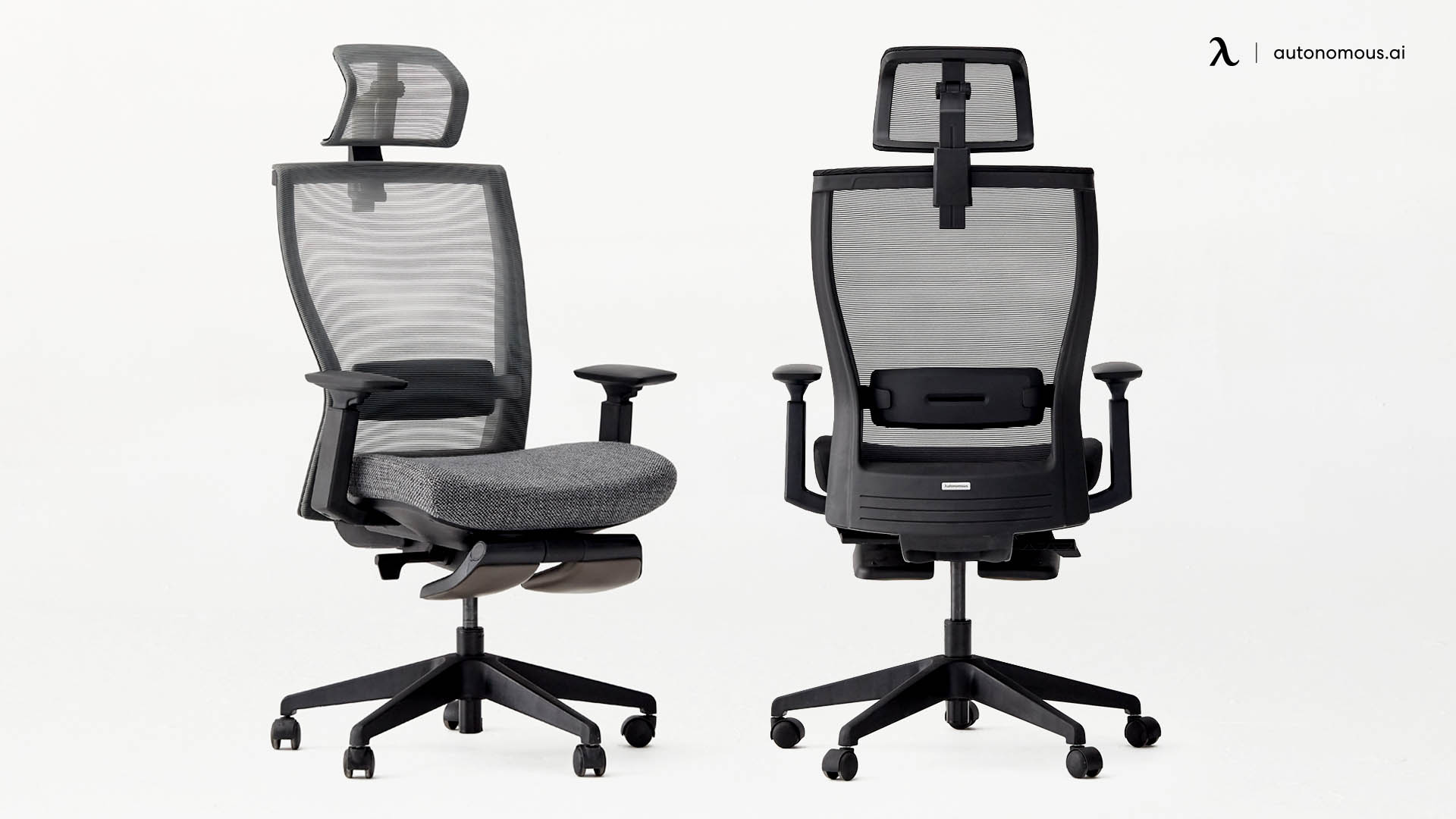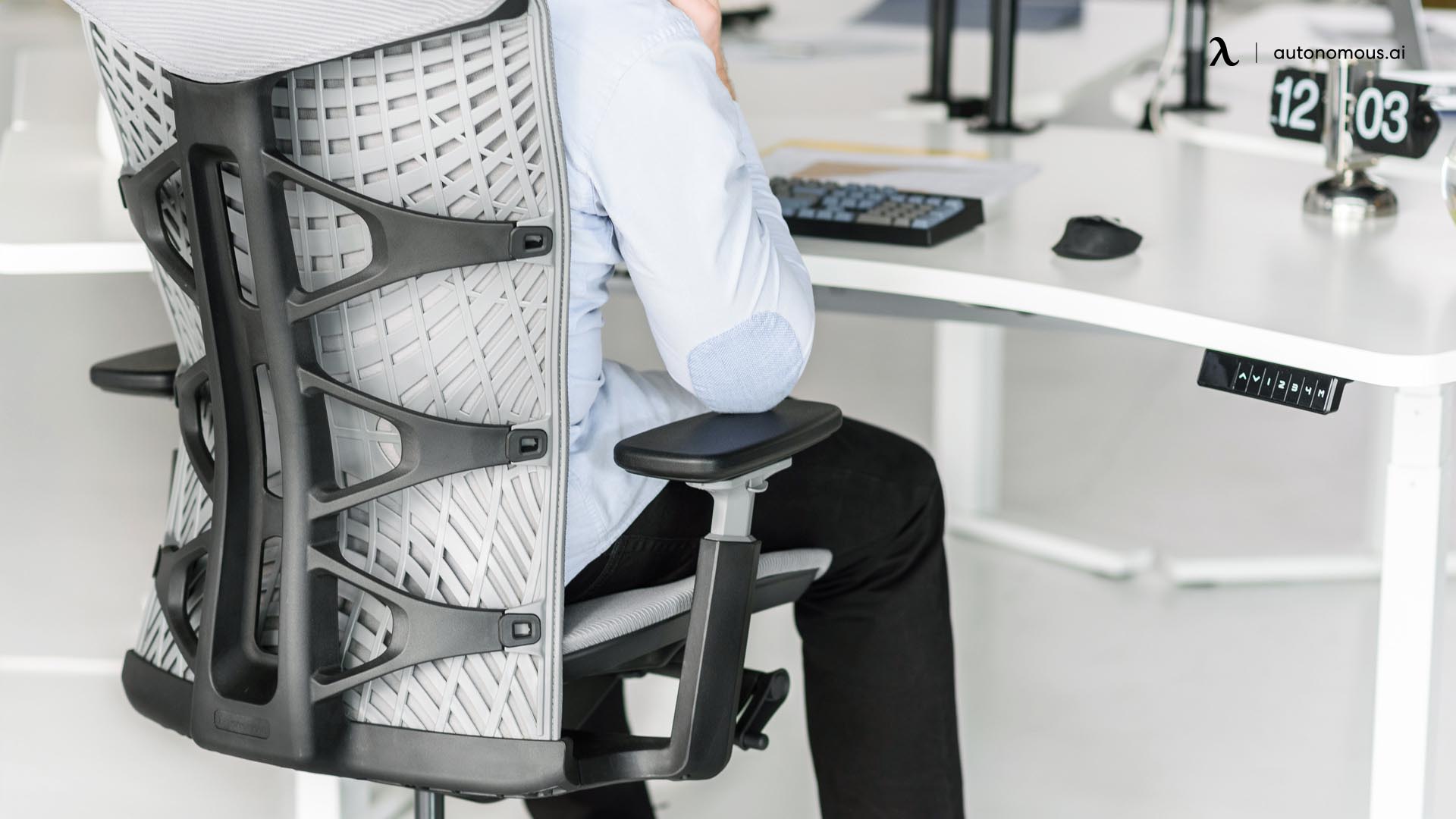Ergonomic Considerations for Programmers’ Chairs: Best Chair For Programmers

Programmers often spend extended periods seated, making the choice of chair crucial for their health and productivity. A poorly designed chair can lead to significant discomfort and long-term health problems, while an ergonomically sound chair can significantly improve posture, reduce pain, and boost overall well-being. This section will delve into the specifics of ergonomic chair design and its impact on programmers’ health.
Ideal Posture and Chair Features
The ideal posture for programmers involves maintaining a neutral spine, with natural curves in the neck, back, and lower back. The hips should be at or slightly above knee level, and feet should be flat on the floor. Chair features play a vital role in supporting this posture. Proper lumbar support maintains the natural curve of the lower back, preventing slouching. Adjustable height allows the chair to be customized to the individual’s height and desk setup, ensuring proper hip and knee alignment. Adjustable armrests provide support for the arms and elbows, reducing strain on the shoulders and neck. The following table illustrates the impact of these features:
| Chair Feature | Impact on Posture | Benefits for Programmers | Potential Negative Impacts (if poorly designed) |
|---|---|---|---|
| Lumbar Support | Maintains the natural curve of the lower back, preventing slouching and reducing strain on the spine. | Reduces back pain and discomfort during prolonged sitting. | Inadequate support can exacerbate back pain and lead to muscle imbalances. |
| Adjustable Height | Ensures proper hip and knee alignment, reducing pressure on the legs and lower back. | Allows for comfortable typing and reduces strain on the neck and shoulders. | Incorrect height can lead to slouching, leg discomfort, and back pain. |
| Armrests | Supports the arms and elbows, reducing strain on the shoulders and neck. | Reduces fatigue and discomfort in the arms and shoulders during extended coding sessions. | Improperly positioned armrests can hinder movement and cause discomfort. Armrests that are too high can also lead to shoulder strain. |
Long-Term Health Consequences of Poor Posture
Poor posture, particularly prolonged slouching, can lead to a range of serious health problems. These include back pain, neck pain, carpal tunnel syndrome, headaches, and even more serious conditions like spinal degeneration and sciatica. The constant strain on muscles and joints caused by poor posture can lead to chronic pain and reduced mobility. A well-designed ergonomic chair, by supporting proper posture, helps mitigate these risks. For instance, proper lumbar support reduces the strain on the lower back, minimizing the risk of back pain and sciatica. Adjustable height ensures proper leg and hip positioning, reducing pressure on the lower back and improving blood circulation.
Ergonomic Chair Features and Their Benefits for Programmers
Several ergonomic chair features are specifically beneficial for programmers. Adjustable lumbar support allows users to customize the level of support to their individual needs, ensuring proper lower back support regardless of body type or posture. A headrest provides support for the head and neck, preventing forward head posture and reducing neck strain, particularly helpful during extended periods of screen viewing. Adjustable seat depth allows the user to adjust the seat’s forward or backward position, ensuring proper thigh support and preventing pressure on the back of the knees. This is crucial for programmers who may spend hours seated. Furthermore, breathable materials help regulate temperature and prevent excessive sweating, improving comfort during prolonged use. Finally, features like tilt and recline mechanisms allow for adjustments that encourage dynamic sitting and prevent stiffness.
Chair Features and Their Impact on Programming Productivity

The choice of chair significantly impacts a programmer’s productivity and well-being. Extended periods of sitting require a chair that supports proper posture and minimizes discomfort, preventing fatigue and potential health issues. Understanding the characteristics of different chair types and their influence on comfort and focus is crucial for optimizing the programming environment.
Comparison of Chair Materials and Suitability for Programming
The material of a chair significantly affects its breathability, durability, and overall comfort during long coding sessions. Different materials cater to varying preferences and needs.
- Mesh Chairs: Known for their breathability, mesh chairs are excellent for preventing overheating, a common issue during prolonged sitting. Their flexibility allows for some degree of conforming to the body’s shape, offering moderate support. However, they may not provide the same level of lumbar support as other chair types, potentially leading to discomfort for individuals with back problems. Mesh chairs are generally lighter and easier to move than other options.
- Leather Chairs: Leather chairs offer a luxurious feel and are often perceived as more durable. However, they can become quite warm and less breathable than mesh or fabric options, particularly in warmer climates. The lack of breathability can lead to discomfort and increased sweating during extended use. High-quality leather chairs typically provide excellent support and cushioning.
- Fabric Chairs: Fabric chairs offer a balance between breathability and comfort. The level of comfort varies greatly depending on the fabric type and padding. Some fabric chairs provide excellent support and cushioning, while others may lack the necessary lumbar support. Fabric chairs are generally easier to clean than leather chairs, but they may wear down faster than leather depending on the fabric quality.
The Relationship Between Chair Comfort and Programming Focus
Comfort is intrinsically linked to focus and productivity. Discomfort, whether from poor posture, inadequate lumbar support, or excessive heat, can lead to distractions, reduced concentration, and ultimately, decreased productivity. Pain, stiffness, and discomfort can cause mental fatigue, impacting a programmer’s ability to think critically and solve problems effectively. A comfortable chair promotes better posture, reducing strain on the back, neck, and shoulders. This, in turn, allows for sustained focus and uninterrupted coding sessions. For example, studies have shown a correlation between musculoskeletal discomfort and reduced work performance in office settings, a finding directly applicable to programmers who spend significant time seated.
Design of an Ideal Programmer’s Chair
The “ideal” programmer’s chair prioritizes ergonomics and promotes sustained comfort and focus. It incorporates the following features:
- Breathable Mesh Backrest: Allows for airflow and prevents overheating, crucial for extended use.
- Adjustable Lumbar Support: Provides customized support to maintain the natural curvature of the spine, reducing back strain.
- Height-Adjustable Seat and Armrests: Allows for optimal positioning to ensure proper posture and minimize strain on the wrists and shoulders. The ability to adjust the armrests is especially important to avoid slouching or hunching.
- Headrest (Optional): Provides additional support for the neck and head, particularly beneficial for individuals who tend to lean back during prolonged work sessions.
- Durable and Easy-to-Clean Fabric or High-Quality Mesh: Ensures longevity and ease of maintenance.
- Tilting Mechanism with Locking Option: Allows for dynamic posture changes and the ability to lock into a preferred position for periods of focused work.
- Wide and Deep Seat: Provides ample space for comfortable seating and avoids pressure points.
These design choices, based on established ergonomic principles, aim to create a chair that minimizes discomfort, maximizes comfort, and promotes sustained focus and productivity for programmers.
Budget-Friendly Options and High-End Investments
The choice between a budget-friendly and a high-end programmer chair significantly impacts comfort and long-term health. While high-end chairs offer superior ergonomics and features, budget options provide a more accessible entry point for those with tighter budgets. Understanding the trade-offs between cost and features is crucial for making an informed decision. This section compares and contrasts both categories to aid in your selection.
Budget-Friendly Programmer Chairs
Finding a comfortable and supportive chair without breaking the bank is possible. However, budget chairs often compromise on certain features found in higher-priced models. It’s important to carefully consider the limitations before purchasing.
- Flash Furniture Nicholas Contemporary Mesh Executive Swivel Office Chair: This chair offers a mesh back for breathability, adjustable height, and lumbar support, but may lack the robust build quality and advanced adjustment options of higher-end models. The mesh can also sometimes feel less supportive than a well-padded back.
- Amazon Basics Mid-Back Mesh Office Chair: A very affordable option, this chair provides basic adjustability and a mesh back. However, expect less ergonomic support and potentially lower durability compared to more expensive alternatives. The lack of robust lumbar support might be a significant drawback for extended use.
- Hbada Office Chair: This chair offers a decent balance of features for its price, including adjustable height, armrests, and lumbar support. While generally well-reviewed, it might not be as durable or comfortable as premium chairs over extended periods of daily use. The build quality might also feel less substantial.
High-End Programmer Chairs
High-end programmer chairs justify their higher price tag through superior ergonomics, durability, and advanced features designed for extended sitting. These features contribute to improved posture, reduced strain, and increased comfort, leading to enhanced productivity and overall well-being.
| Chair Model | Key Features | Price Range | Justification for Higher Price |
|---|---|---|---|
| Herman Miller Aeron | Fully adjustable postureFit SL lumbar support, breathable 8Z Pellicle suspension, adjustable armrests, tilt limiter | $1500 – $2000+ | Exceptional ergonomics, durability, and adjustability for optimal posture and comfort. Known for its longevity and high-quality materials. |
| Steelcase Leap | Dynamic back support that adjusts to the user’s movements, adjustable lumbar support, 4D armrests, adjustable seat depth | $1200 – $1800+ | Superior ergonomics, robust build quality, and a wide range of adjustments to accommodate diverse body types and preferences. Designed for long-term comfort and support. |
| Haworth Fern | Flexible and supportive back, adjustable height and depth, breathable mesh back, adjustable armrests | $1000 – $1500+ | Excellent ergonomic design promoting natural posture, durable construction, and a focus on user comfort and customization. |
Revised Article: The Best Chairs for Programmers, Best chair for programmers
Choosing the right chair is crucial for programmers who spend many hours seated. Comfort and proper posture directly impact productivity and long-term health. Key features to consider include adjustable height, lumbar support, and breathable materials. Adjustable armrests and a supportive seat are also vital for comfort. Budget-friendly options exist, offering basic adjustability and mesh backs for breathability, though they may compromise on durability and advanced ergonomic features. High-end chairs, however, offer superior ergonomics and build quality, with features like dynamic back support and advanced adjustability to ensure optimal posture and comfort throughout the workday. The increased investment in a high-end chair often translates to improved health, comfort, and increased productivity in the long run. The best chair for you will depend on your individual needs and budget.
